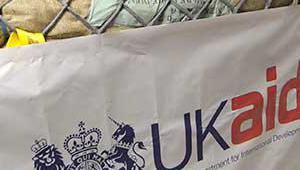As part of the government’s review of spending in the public sector, it has called for greater transparency across all departments. In a quote reported by the BBC last week, the prime minister said he couldn’t promise that people won’t make bad spending decisions in future, but that he could promise that ‘you will find out about them and that will be the best way of ensuring we get better value for money.’
Last week’s announcement by Eric Pickles that the Department for Communities and Local Government will publish details of all spending of more than £500 during Labour’s last year in power was billed as an opportunity to allow taxpayers to ‘go through the books and hold ministers to account’. Pickles added that the department ‘needs to look at where every penny is going, and getting this data out in the open will help that process’.
While it’s certainly encouraging to see government departments publishing such information, this is just the first step that is needed for a thorough cost, purchase and supply review - and spend analysis is at the core of this.
Spend analysis is about collecting and analysing expenditure data. The goal is to reduce procurement costs, improve efficiency and check for compliance. In the private sector, a thorough data collection exercise is the first step for any debt reduction programme. The more transparent the information -- who’s spending what and where -- the better poised the department is to manage future spend.
As with the private sector, the public sector’s greatest challenge is how to work in a multi-supplier environment, with data everywhere. Once organisations have established what they are buying and where, they must then consider whether their suppliers are fit for purpose and if they actually need what is being purchased. Suppliers often use ‘bait-and-switch’ tactics to move clients onto higher margin items - or will try their version of the fast food pitch, ‘would you like fries with that?’
Large public sector organisations are filled with individual budget holders, empowered to make budgetary decisions outside of the procurement department. Many of these employees have limited purchasing experience or training when it comes to making buying decisions. You only trust a very few people to manage your own finances -- trained and experienced individuals -- so why should it be any different when it comes to your organisation’s finances?
The goal should be to create a cost culture throughout the organisation. This must start at the top. If the chief executive is flying first class on short-haul flights, it shouldn’t be a secret. It must also trickle down to every department and every employee and be a part of the organisation’s ethos and individual job objectives.
Organisations must also be aware of the constantly changing supplier market for the costs they are examining and any developments they may be able to capitalise on. However, reducing costs is not just about going to a cheaper supplier. By working in partnership with suppliers to identify cost cutting strategies, public sector bodies can generate savings without affecting or disrupting standards of service.
Robert Allison, is MD of Expense Reduction Analysts, a cost, purchase and supply mangement consultancy
management











